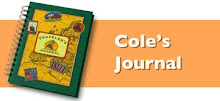 After a quick trip through the countryside, we finally found our “home for the holidays”. Lisbon felt very cozy for a big city with several distinct neighborhoods all sloping towards the sea. Christmas lights decorated the numerous squares and narrow streets, all helping to boost the holiday spirit. But none of this mattered much to the kids, for them Lisbon meant the arrival of Blake and Hannah from Minnesota. Our friends the Theisens (Ann, Joel, Blake, and Hannah), flew into Madrid, rented a car, and arrived right on schedule to our apartment in Lisbon. Angie and I were very impressed with their flawless arrival. They will be with us for two weeks as we travel through Portugal and Spain, so you’re bound to see some new faces in our photos.
After a quick trip through the countryside, we finally found our “home for the holidays”. Lisbon felt very cozy for a big city with several distinct neighborhoods all sloping towards the sea. Christmas lights decorated the numerous squares and narrow streets, all helping to boost the holiday spirit. But none of this mattered much to the kids, for them Lisbon meant the arrival of Blake and Hannah from Minnesota. Our friends the Theisens (Ann, Joel, Blake, and Hannah), flew into Madrid, rented a car, and arrived right on schedule to our apartment in Lisbon. Angie and I were very impressed with their flawless arrival. They will be with us for two weeks as we travel through Portugal and Spain, so you’re bound to see some new faces in our photos.Our apartments overlooked Lisbon’s main square called the Rossio (the photo above is taken from the Theisen’s living room), which has been the stage for everything from chariot races to bull fights. From here we meandered through the old fishing villages, found some great restaurants, took in the local fado music, and explored the city's vast history of Portuguese sailors. Our kids were so excited to have fellow explorers though, it didn’t matter what we did.

 Since the mid-1800’s, fado has been Lisbon’s blues. (Fado translates to fate.) The singer is usually accompanied by two or three guitarists, one playing a Portuguese (12 string) guitar. Interestingly fado was banned from 1932 until 1968 as it was considered “harmful to social progress”. Today though it’s as popular as ever and can be heard all over town when the sun goes down.
Since the mid-1800’s, fado has been Lisbon’s blues. (Fado translates to fate.) The singer is usually accompanied by two or three guitarists, one playing a Portuguese (12 string) guitar. Interestingly fado was banned from 1932 until 1968 as it was considered “harmful to social progress”. Today though it’s as popular as ever and can be heard all over town when the sun goes down. When in Portugal, a glass of Port is a must. The Port Institute offers hundreds of different bottles to sample along with some equally tasty chocolates.
When in Portugal, a glass of Port is a must. The Port Institute offers hundreds of different bottles to sample along with some equally tasty chocolates.  One of Portugal's most famous residents was the explorer Vasco da Gama. If you're rusty on your history, he navigated Europe's first direct trade route to India in 1498. The new trade routes made Lisbon one of Europe's richest cities. Before leaving home, Blake had just finished a course about da Gama in school. The timing could not have been more perfect as he breezed through all our questions about the explorer.
One of Portugal's most famous residents was the explorer Vasco da Gama. If you're rusty on your history, he navigated Europe's first direct trade route to India in 1498. The new trade routes made Lisbon one of Europe's richest cities. Before leaving home, Blake had just finished a course about da Gama in school. The timing could not have been more perfect as he breezed through all our questions about the explorer. The day we visited happened to be the anniversary of his death (a mere 484 years ago), thus the flowers on his tomb.
The day we visited happened to be the anniversary of his death (a mere 484 years ago), thus the flowers on his tomb. The naval museum covered several centuries of Portuguese navigation and the boys loved it all.
The naval museum covered several centuries of Portuguese navigation and the boys loved it all. The girls on the other hand found other ways to keep busy.
The girls on the other hand found other ways to keep busy. On Christmas morning we attended mass at the Se' de Lisboa. Mass was led by the Archbishop and broadcast live around the country.
On Christmas morning we attended mass at the Se' de Lisboa. Mass was led by the Archbishop and broadcast live around the country.


 This was a fun statue at a downtown construction site.
This was a fun statue at a downtown construction site.










































